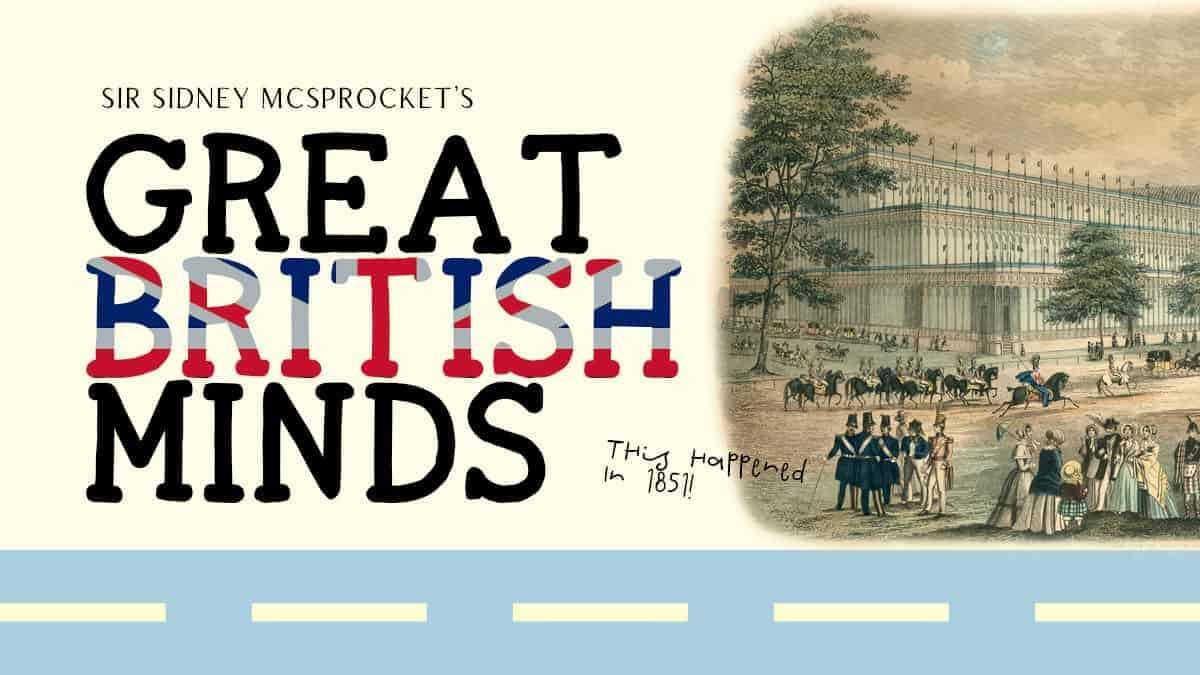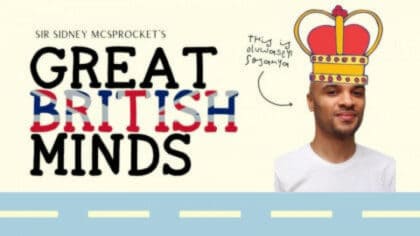Britain has always been proud of its inventors – women and men with fine minds solving problems and helping us to improve our lives through invention design and innovation.
This was never more the case than in 1851 – Victorian Britain, ah!
Industry had never been busier and improvements in transport and communication meant the world was being connected in a tremendous number of new ways.

And in 1851 a grand – nay a GREAT exhibition was held in London to celebrate the work of great minds from every country on earth.
It was the brainwave of Prince Albert, husband to the venerable Queen Victoria. The Prince and his Royal Commission resolved to celebrate the global advances of the industrial age as led by Britain – oh and the wider world too.
Bringing like-minded folk together and sharing what we know is a terrific way to generate new ideas and to inspire other people.

There were no existing buildings large enough to house such a huge exhibition, so Prince Albert and his commissioners ordered the construction of an astounding Crystal Palace. The enormous glass structure was inspired by a greenhouse and designed by English gardener, Joseph Paxton.
In just five months, the glittering Crystal Palace was complete – a enormous structure of iron and glass which must have looked absolutely magnificent twinkling in the sunshine.
Three times the height of St Pauls Cathedral and as long as 51 London buses, it was the largest building in the world at that time!
But the Palace wasn’t there to look impressive.

When it opened its doors in May 1851, it contained 100,000 exhibits from 13,937 exhibitors – from every corner of the globe. From a British printing press to a Canadian fire engine, guests to the Great Exhibition could marvel at materials, industry and inventions from far and wide. They were composed of four categories – Raw Materials, Machinery, Manufactures and Sculpture and the Fine Arts.
More than six million people – equivalent to a third of the entire population of Britain at the time – visited the exhibition during its opening period between 1 May and 11 October 1851.
The Exhibition was a great success, making a profit of £186,000 (that’s £159 million today)! Prince Albert and his Commissioners used this money to buy a large plot of land in South Kensington, at the time it was a market garden, and establish a cultural quarter in London.
Nicknamed ‘Albertopolis’ by The Times, this iconic site still remains today. It includes world famous institutions such as The Royal Albert Hall, the Natural History Museum, the Science Museum, the V&A, as well as Imperial College London, the Royal Colleges of Art and Music and many more.









